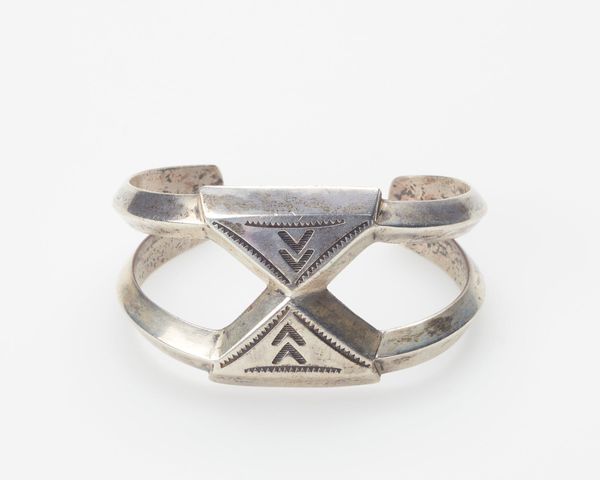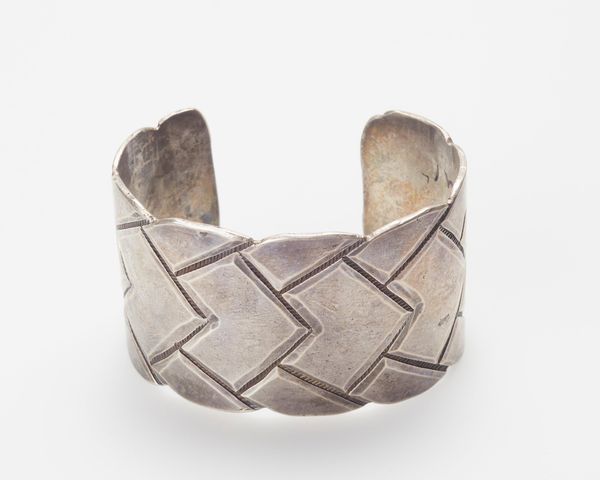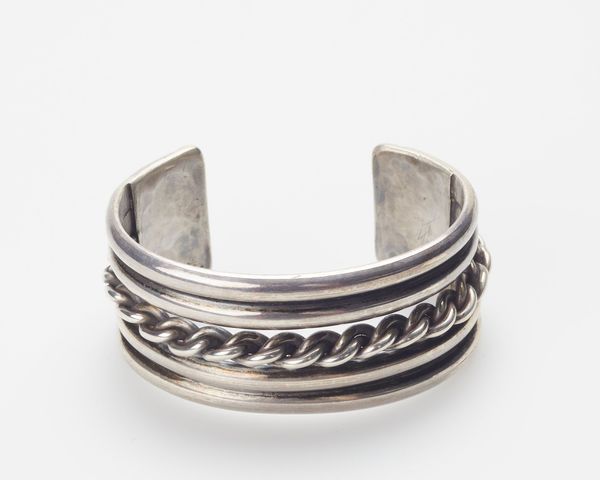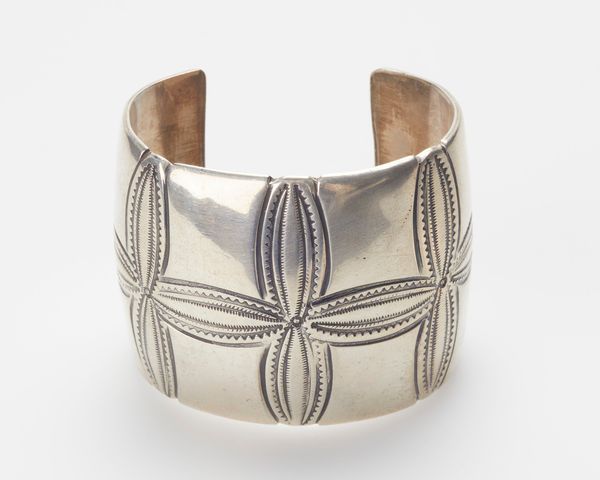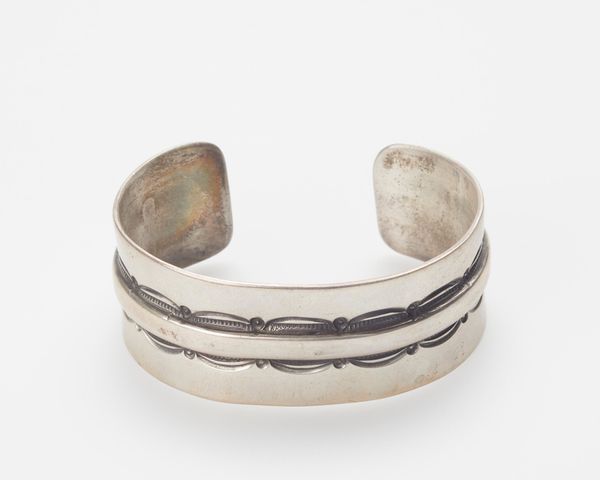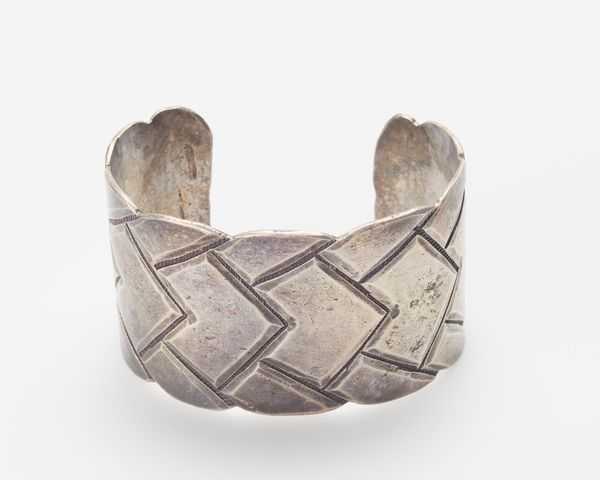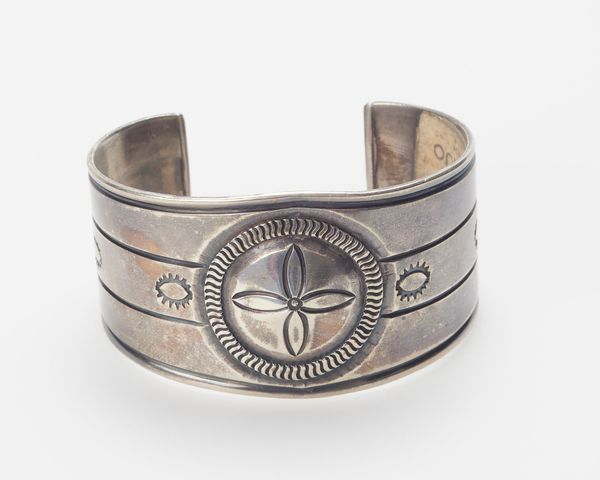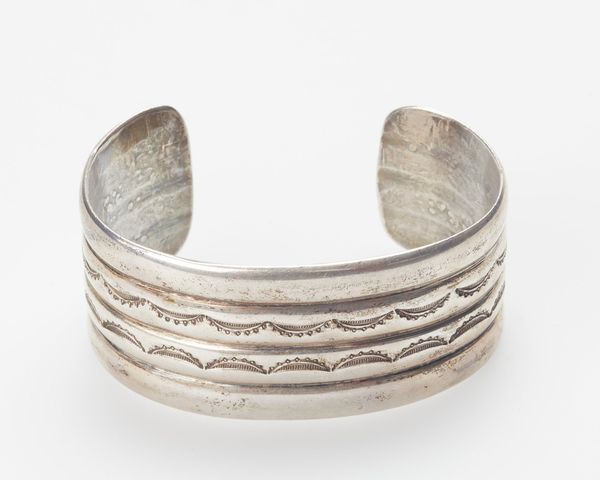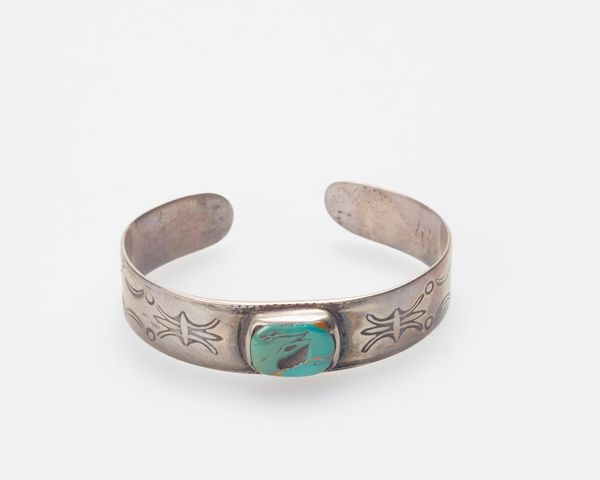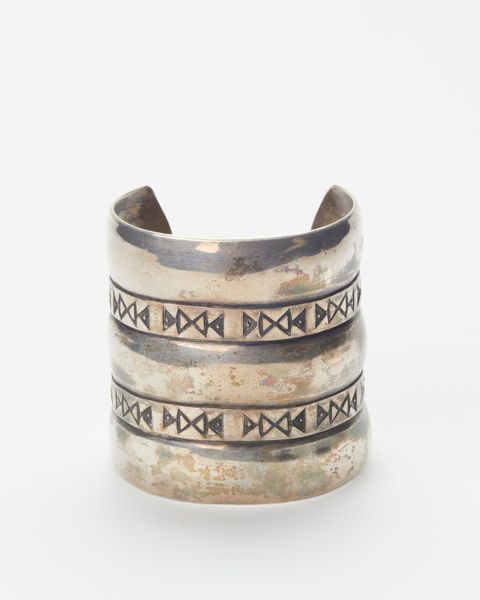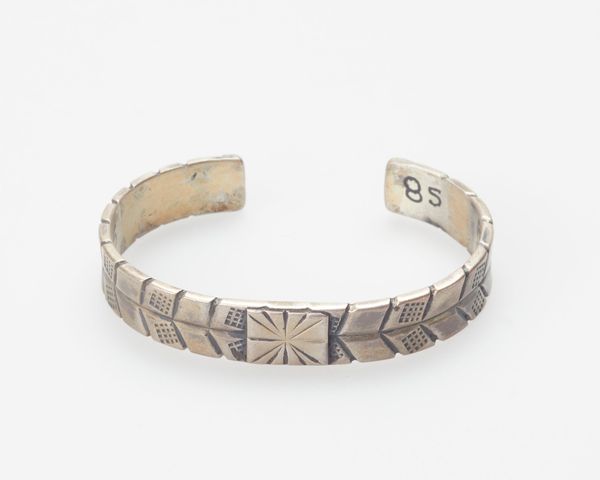
silver, metal
#
silver
#
metal
#
geometric
#
indigenous-americas
Dimensions: 2 5/8 x 3/4 in. (6.67 x 1.91 cm)
Copyright: Public Domain
Curator: This is a striking silver bracelet, crafted around 1940 by a Navajo artist. It’s currently held here at the Minneapolis Institute of Art. Editor: Instantly, it evokes a sense of timelessness. That subdued shine of the silver, paired with the stark, almost architectural geometric patterns, makes it feel incredibly solid and enduring. It’s deceptively simple but quite impactful, you know? Curator: Exactly! The simplicity belies a complex history of material access and cultural expression. Silverwork became significant for Navajo artisans through trade and adaptation of metalworking techniques learned from Spanish colonizers. So, consider the labour that went into sourcing, refining, and shaping that silver. Editor: It's like, this object tells a story of cultural exchange, but also a narrative of resilience and adaptation under pressure. It whispers of survival. And how personal the imprint must have been, handcrafting such rigid material. I wonder what the silversmith was thinking at the moment, maybe thinking about loved ones, landscape... Curator: Precisely. The geometric motifs are quite traditional; however, individual artists brought ingenuity and innovation into their production. Notice the uniformity, which reflects mass production needs for market demand in the mid-20th century. This piece sits right on the intersection of tradition and commercial needs. Editor: Ah, so it balances the deeply personal touch with these economic realities... Looking at this rosette in the middle panel – almost looks like a stylized blossom locked within a geometric box. It speaks to constraint, doesn't it? Curator: Indeed. The "box" surrounding it, repeated by flanking blocks, could represent order or protection; ultimately, though, interpretations depend upon who’s viewing it. Editor: It really invites reflection about ownership and expression. The stark, unyielding metal holds stories. Even now it holds me in consideration. Curator: Ultimately, the piece presents the interplay between cultural meaning and the conditions of production within the American Southwest in the mid-20th Century. Editor: Exactly. Now that I see all this labour, struggle, and thought poured into the artifact I am even more impressed by the resilience of the artist. What an object; thank you.
Comments
No comments
Be the first to comment and join the conversation on the ultimate creative platform.
